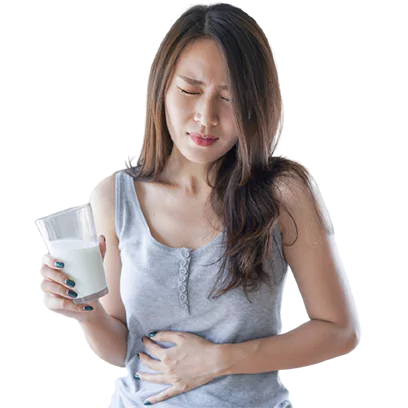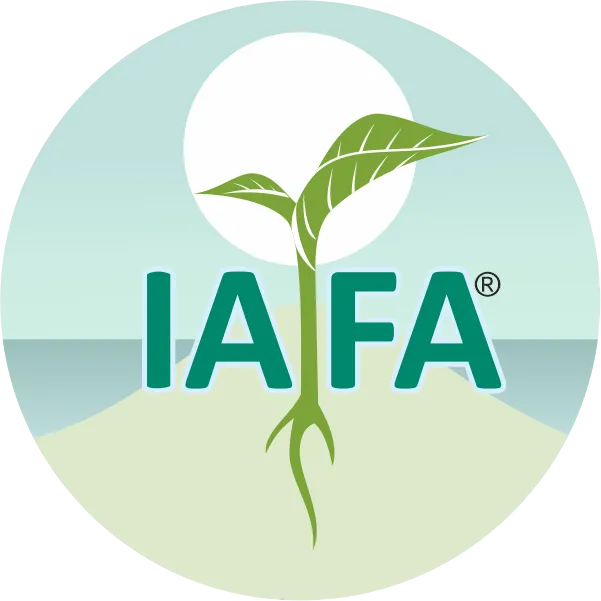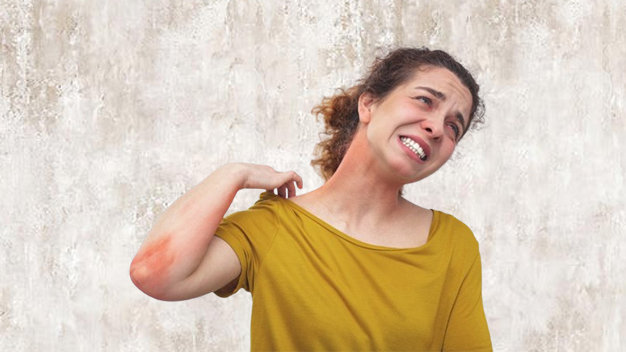On This Page
Lactose Intolerance – Causes, Symptoms and Ayurvedic Treatment
अतिसारेषुयोनातियत्नवान्ग्रहणीगद: l
तस्यस्यादग्निविद्ध्वंसकरैरत्यर्त्थसेवितै: ll
Lactose is a type of sugar present in milk. People having lactose intolerance will not be able to digest lactose completely. So, they develop diarrhea, bloating, etc. after having dairy products. This condition is also called lactose malabsorption. Lactase is the enzyme produced in the small intestine that helps in the digestion of lactose. A very low amount of lactase in the body can lead to the condition of Lactose Intolerance.
Causes of Lactose Intolerance
Lactose intolerance follows when the small intestine doesn’t produce enough lactase needed to digest lactose. Typically, lactase converts lactose into glucose and galactose, which will be absorbed into the bloodstream. In lactase deficiency, lactose travels into the colon instead of being absorbed. In the colon, normal bacteria interact with undigested lactose, causing the signs and symptoms of lactose intolerance.
There are mainly three types of lactose intolerance:-
1. Primary Lactose Intolerance
It is the most common type of lactose intolerance. Here, lactase production decreases sharply by adulthood, making milk products difficult to digest.
2. Secondary Lactose Intolerance
This type of lactose intolerance occurs when the small intestine reduces lactase production followed by a disease, injury, or surgery involving the small intestine. Illnesses associated with secondary lactose intolerance include celiac disease, intestinal infection, Crohn’s disease, and bacterial overgrowth.
3. Congenital or Developmental Lactose Intolerance
It is a rare condition. Here, babies are born with lactose intolerance as a result of a lack of lactase. This condition can be passed over generations by inheritance. In congenital lactose intolerance, both parents pass on the same gene variant to the child, and the child will be affected. It can also affect premature infants who have insufficient lactase levels.
Symptoms of Lactose Intolerance
The signs and symptoms of lactose intolerance usually start from 30 minutes to two hours after having lactose-containing foods.
Major signs and symptoms include:
- Diarrhea
- Nausea and vomiting
- Abdominal cramps
- Bloating
- Gas formation
Ayurvedic Reference of Lactose Intolerance (Grahani)
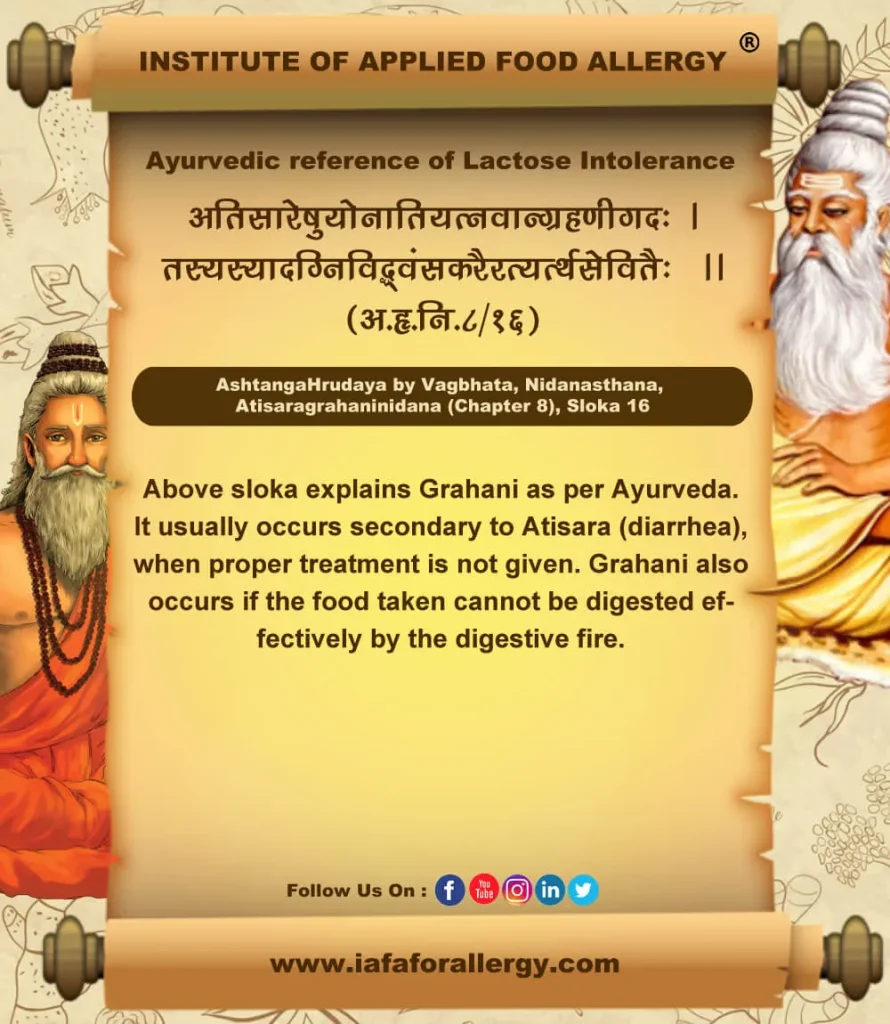

“Dr. Gupta’s IAFA is a promising institute in the management of various allergies and related illnesses. Institute of Applied Food Allergy® provides the better cure for conditions like Lactose Intolerance through genuine Ayurveda”.
Make IAFA your choice and forget all worries about your health!!!
– Dr. Sahil Gupta (B.A.M.S., M.H.A.)
Ayurvedic Allergy Specialist
CEO & Founder of IAFA®
At last, Easier Lactose Intolerance Management

Trusted by
More than 90,000 Patients

Convenient
at-Home Treatments

9.2 / 10
Customer Satisfaction Score
Ayurvedic Treatment of Lactose Intolerance
Ayurveda describes effective management through various treatment modalities for physical as well as mental ailments related to Lactose Intolerance.
Internal Medicines for Lactose Intolerance
- Kalasakadi Kwatha
- Kalyanaka Kwatha
- Chitrakadi Gulika
- Manasamitra Vataka
- Ashta Churna
- Dadimashtaka Churna
- Hinguvachadi Churna
- Kapithashtaka Churn
Treatment Procedures for Lactose Intolerance
- Virechana (Purgation)
- Vamana (Emesis)
Single Herbs in the Management of Lactose Intolerance
- Haridra (Curcuma Longa)
- Hareetaki (Terminalia Chebula)
- Kutaja (Holarrhena antidysenterica)
- Ashwagandha (Withania somnifera)
- Patha (Cissampelos pareira)
- Musta (Cyperus rotundus)
- Karanja (Pongamia pinnata)
Diet Management in Lactose Intolerance
Do’s (Pathya) in Lactose Intolerance
- Lactose-free milk
- Non-dairy creamers (read labels to make sure)
- Rice water
- Soymilks
- Intake of lesser quantity of food
- Light and easily digestible food
- Frequent intake of small amounts of lukewarm water
- More fiber-containing fruits and vegetables
- Mild exercise
- Eat salads without salt
Don’ts (Apathya) in Lactose Intolerance
- Milk & milk products
- Soft and processed cheese
- Buttermilk
- Cheese containing food
- Cream
- Evaporated & condensed milk
- Hot chocolate
- Ice cream
- Processed cheese
- Excess food intake
- Coldwater
- Fried and bakery food
- Spicy and sour food
- Mental stress
- Working without rest
Yoga and Pranayama in Lactose Intolerance
Following Yoga postures are beneficial in strengthening the digestive system& managing lactose intolerance:
- Ananda Balasana
- Pavanamuktasana
- Parighasana
- Ardhamatsyendrasana
- Jataraparivrithi
- Salamba Setubandhasana
- Malasana
Pranayama helps to relax all the body parts including the bowels. It helps to attain control over body movements and functions.

Frequently Asked Questions
Question: What is Lactose Intolerance?
Answer: Lactose Intolerance is the condition where the body’s production of an enzyme called Lactase, which is required for the digestion of milk sugar Lactose, is reduced greatly.
Question: What are the causes of Lactose Intolerance?
Answer: Lactose Intolerance can be caused by various reasons like hereditary problems, associated with other diseases of the digestive system, premature birth, etc.
Question: Can Ayurveda help in the management of Lactose Intolerance?
Answer: Yes. Ayurveda has an effective treatment protocol for the management of Lactose Intolerance through various internal medicines as well as treatment procedures.
Question: What is the Ayurvedic treatment of Lactose intolerance?
Answer: In Ayurveda, there is effective and safe treatment of lactose intolerance. Ayurvedic treatment of lactose intolerance includes reduction of aggravated doshas, restoration of gastroenteric fire, reducing tension and stress.
Question: What foods to avoid in lactose intolerance?
Answer: Patients suffering from this condition should avoid taking milk and dairy products like yogurt, cheese.
References
- Ashtanga Hrudaya by Vagbhata, Nidanasthana, Atisaragrahninidana (Chapter 8), Sloka 16.
- Sharma PV, Ashtanga Sangraha of Vagbhata Uttara Sthana Vol. III, 2013, Varanasi: Chaukhambha Sanskrit Sansthan, Chapter 2, sloka 18, p. 20.
- Bhartiya S, Ashtanga Hridaya arthaat Vagbhat 2013 Mathura: Govardhan Pustakalaya, 2013, Sutrasthana Chapter 8, sloka 9, p. 103.
- Sahil Gupta, Ayurvedic Aspects of Allergies and Fungal Infections, Edition 2021, Lactose Intolerance Chapter No. 07, Page No. 106-111.
Dr. Gupta’s IAFA is a promising institute in the management of various allergies and related illnesses. IAFA provides the better cure for conditions like Lactose Intolerance through genuine Ayurveda.
Make IAFA your choice and forget all worries about your health!!!
Was this Page Helpful?
So IAFA Root-Cause Treatment of Your Lactose Intolerance is Just 3 Steps Away!

01. Connect With Us
Share your history of illness or Book your appointment

02. Consult With Us
Dr. Gupta a certified Ayurvedic Allergist Consultant

03. Root Cause Treatment
Get an accurate diagnosis, medicines, diet & lifestyle change
Lactose Intolerance – Case Studies
Real Case Studies of Successfully Treated Patients from All Around the World by IAFA Ayurveda®
-
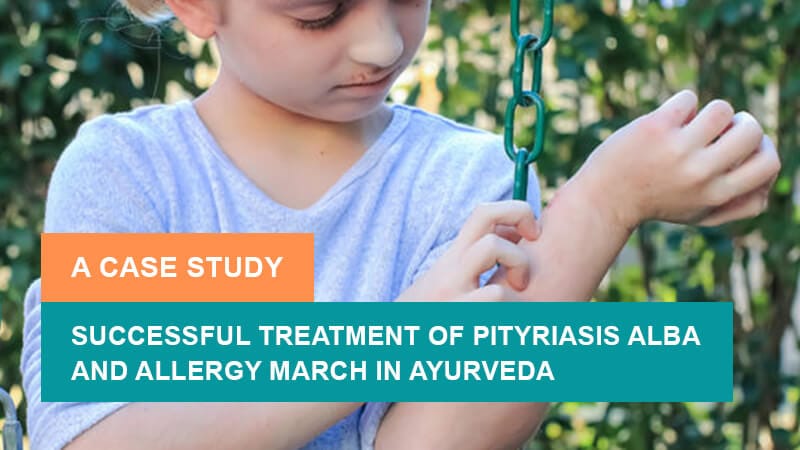
Successful Treatment of Pityriasis Alba and Allergy March in Ayurveda – A Case Study
It is a case study about successful treatment of Pityriasis Alba and…
-

Successful Treatment of Gallstones (Cholelithiasis) with Ayurvedic Medications – A Case Study
It is a case study about the successful treatment of Gallstones (Cholelithiasis)…
-

48-Year-Old Male Patient Got Relief from Chronic Aspergillosis of Paranasal Sinuses – A Case Study
Fungal infections can be treated with a high success rate by various…
-
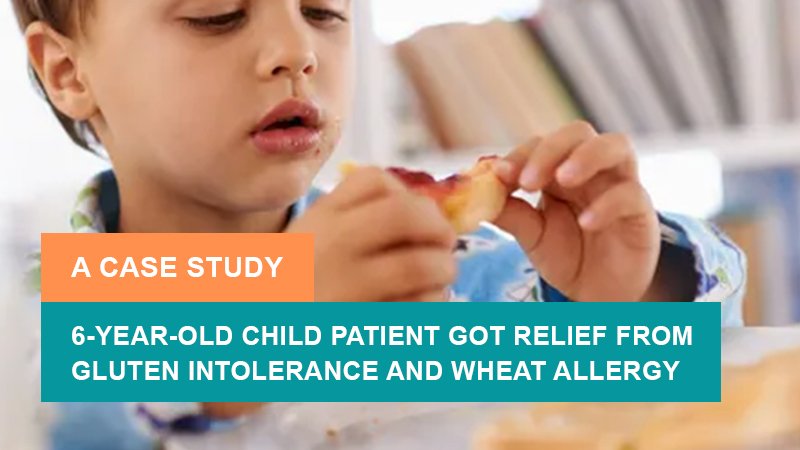
6-Year-Old Child Patient Got Relief from Gluten Intolerance and Wheat Allergy – A Case Study
It is a case study of a 6-year-old Child Patient who got…


